With gold prices holding above US$1,200 per oz. and money flowing back into earlier-stage exploration and development projects, gold juniors are poised to make progress at projects around the world this year. Here is a look at six such companies.
GOLDSTRIKE RESOURCES
Excitement around Goldstrike Resources’ (TSXV: GSR; US-OTC: APRAF) gold exploration projects in the Yukon hit a new level in early March, with U.S. gold mining giant Newmont Mining (NYSE: NEM) swooping in with a US$39.5-million deal comprised of a private placement and staged work commitments to advance Goldstrike’s Plateau gold project in the central-eastern portion of the territory.
Newmont will make an initial US$4.5-million, non-brokered private placement in Goldstrike to buy 12.7 units at 47.42¢ per unit, and has a right to earn an initial 51% interest in Plateau by paying US$6 million in cash, spending at least US$13 million on exploration and completing a National Instrument 43-101 compliant resource estimate.
In the second stage, Newmont could earn another 24% by spending US$16 million on exploration and completing a feasibility study by 2027. Newmont would have more spending and funding commitments with a mine.
“Goldstrike is now fully funded to move forward and unlock the potential of the district-scale Plateau gold project,” Goldstrike president and CEO Terence King said.
KIRKLAND LAKE GOLD
The dust has settled at Toronto-based gold miner Kirkland Lake Gold (TSX: KLG; US-OTC: KLGDF) after the company fended off a hostile $1.4-billion offer from Gold Fields and Silver Standard Resources.
Instead, in November Kirkland Lake completed a friendly business combination with Australia’s Newmarket Gold to form a mid-tier gold company with annual production exceeding 500,000 oz. gold from three high-grade, low-cost operations: the flagship Macassa and Taylor mines in northeastern Ontario; and the Fosterville mine in the state of Victoria, Australia.
In March, Kirkland Lake Gold reported finding the Lantern gold deposit within its Australian Northern Territory operations at its Cosmo open-pit and underground gold mine, with intercepts such as 119 grams gold per tonne over 4.5 metres and 15.27 grams gold over 11.1 metres.

In the mill at Kirkland Lake Gold’s Macassa gold mine complex in Ontario in 2015. Credit: Kirkland Lake Gold.
In March Kirkland Lake boosted Macassa reserves by 37% to 3 million tonnes grading 20.8 grams gold per tonne (2 million contained oz. gold) and Fosterville by 66% to 2.2 million tonnes at 9.2 grams gold (643,000 oz. gold). All the company’s Canadian and Australian assets have 5.3 million oz. gold in additional resources.
LYDIAN INTERNATIONAL
Denver-based Lydian International (TSX: LYD) is developing Armenia’s first large, modern gold mine at its wholly owned Amulsar project in the country’s south. By all technical standards it is a conventional open-pit mining and milling plan that seems destined to succeed.

Lydian International’s Amulsar gold property in southern Armenia in 2013. Credit: Lydian International.
Updated in February 2017, Amulsar’s proven and probable reserves stand at 103 million tonnes grading 0.79 gram gold per tonne and 3.9 grams silver per tonne, or 2.6 million contained oz. gold and 12.7 million oz. gold. Measured and indicated resources are 142 million tonnes at 0.76 gram gold and 3.8 grams silver, and inferred resources add 72 million tonnes at 0.55 gram gold and 3.3 grams silver.
After many years of development and permitting, mine construction is getting underway with targeted production of 225,000 oz. gold annually for at least 10 years at all-in sustaining costs (AISCs) of US$585 per oz. gold, with first gold production slated for 2018.
Lydian has recently signed major equipment supply contracts with Zeppelin, Sandvik, Azmet, ABB and Renco to help develop Amulsar.
The US$438-million project cost (including a US$370 capex) is being financed by equipment loans, a capped stream, a term loan and equity. As of early March, 40% of capex has been committed by Lydian.
ROXGOLD

Roxgold president and CEO John Dorward (left) and chief operating officer Paul Criddle celebrating the first gold pour at Roxgold’s Yaramoko gold mine in Burkina Faso in May 2016. Credit: Roxgold.
Despite being a relatively young company, Roxgold (TSX: ROXG) has swiftly become a gold producer. On Oct. 1, 2016, it achieved commercial production at its high-grade Yaramoko gold mine in Burkina Faso’s Houndé greenstone belt. This feat was accomplished US$4-million under budget, six weeks ahead of schedule, and only 30 months after the tabling of a positive feasibility study.
As of Dec. 31, 2016, the company had poured 77,157 oz. gold and had US$70 million in cash to end the year on a strong note.
This year, Roxgold plans to produce 105,000 to 115,000 oz. gold at AISCs of up to US$790 per oz. gold. It is also working to connect the mine to the Burkina Faso high-voltage electricity network, which should lower costs across the operation.
Roxgold reports that Yaramoko’s orebody widths and grades are in line with expectations, and that it sees positive ground conditions and geological definition.
It expects to update the Zone 55 resource shortly, and come up with an updated life-of-mine plan for Yaramoko, including devising a development strategy for the Bagassi South deposit.
TMAC RESOURCES
TMAC Resources (TSX: TMR) is already producing gold at its remote, wholly owned Hope Bay gold property in northern Nunavut. The first gold pour was on Feb. 9 from the project’s Doris mine and mill complex, which TMAC says is on the cusp of achieving commercial production after having completed plant commissioning.

Aerial view from the south of TMAC Resources’ Doris gold mine at the Hope Bay gold property in Nunavut. Credit: TMAC Resources.
At year-end, TMAC had stockpiled 121,600 tonnes of ore grading 14.5 grams per tonne gold and containing 56,500 oz. gold. TMAC says the ore stockpile will be used to augment mill throughput to 1,000 tonnes per day during 2017, as it ramps up mining rates to 1,000 tonnes per day and hits a planned expansion to 2,000 tonnes per day starting in early 2018.
As of Dec. 31, 2016, TMAC had spent $350 million building the mine, which could produce 130,000 to 140,000 oz. gold this year, at AISCs below US$750 per ounce.
TOREX GOLD RESOURCES
Fred Stanford-led Torex Gold Resources (TSX: TXG) is in full growth mode at its El Limon-Guajes (ELG) gold mine complex in southern Mexico.
Having produced 279,937 oz. gold at an AISC of US$733 per oz. at ELG in 2016, Torex aims boost this figure to 350,000 to 380,000 oz. gold this year at an AISC of US$775 to US$825 per ounce.

The mill at Torex Gold Resources’ El Limon-Guajes (ELG) gold mine complex in southern Mexico. Credit: Torex Gold Resources.
As operations ramp up, Torex is working to improve the performance of its tailings filtration plant and sulphidization, acidification, recycling and thickening plant to manage soluble copper.
Based on a 3.6 million oz. reserve calculated in 2015, the mine is slated to produce 370,000 oz. gold annually for 8.5 years at a life-of-mine AISC of US$616 per oz. — exploiting an open pit with a relatively high grade of 2.6 grams gold.
Only 7 km away from ELG lies Torex’s promising Media Luna gold project, which already has an inferred resource of 7.4 million equivalent oz. gold. In a preliminary economic assessment, Torex envisages spending US$482 million to build a mine that would produce 350,000 oz. gold equivalent for 13 years at an AISC of US$636 per ounce.

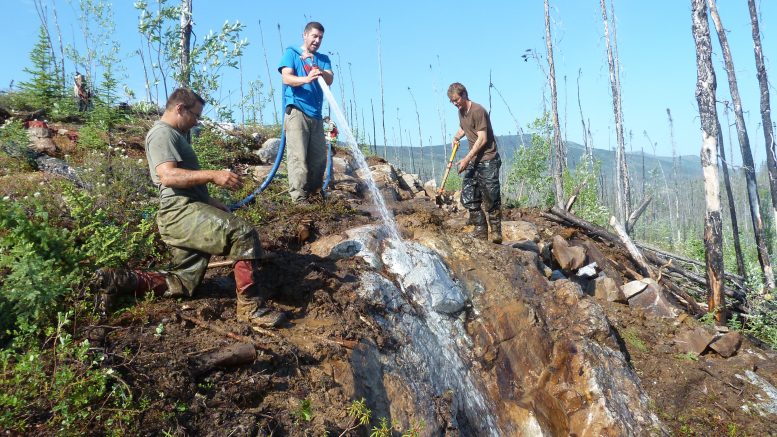
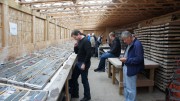
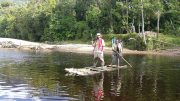
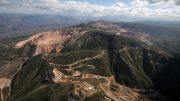
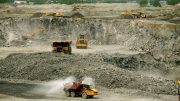
Be the first to comment on "Snapshot: Six gold juniors developing high-impact projects around the world"